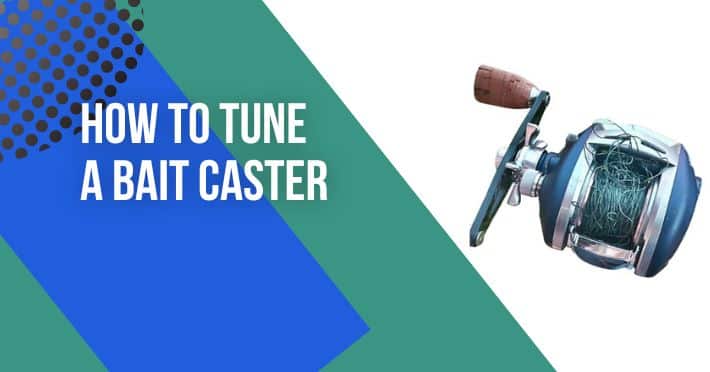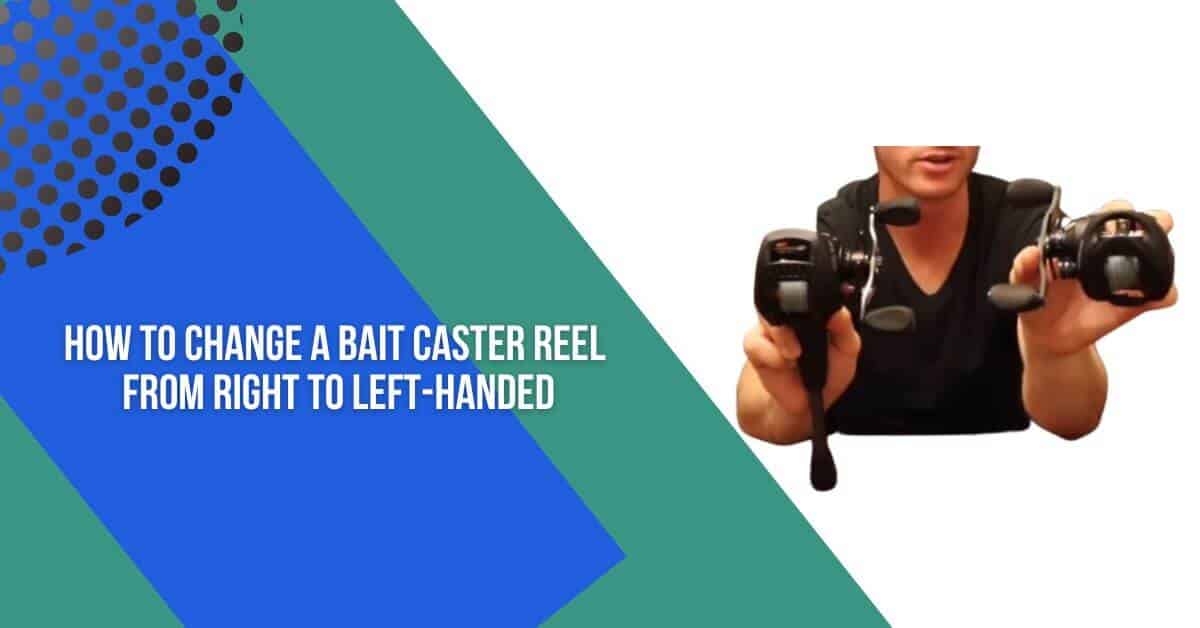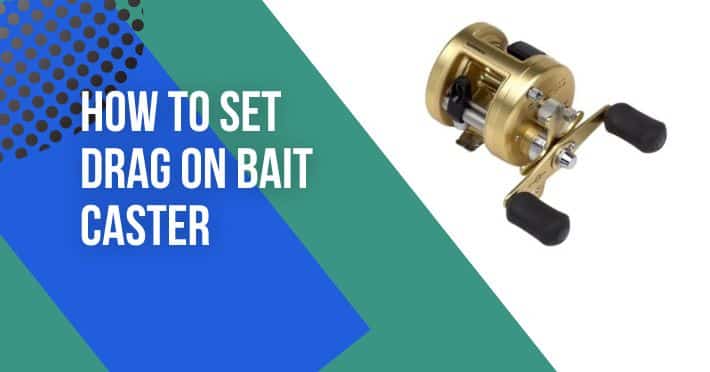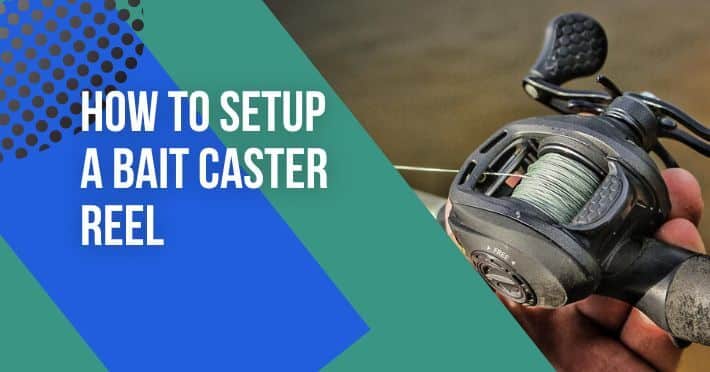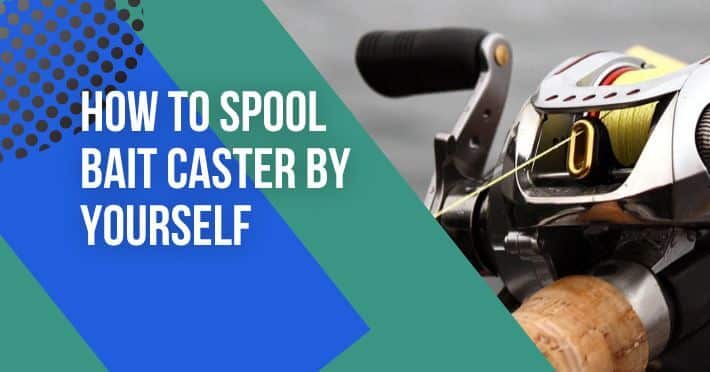Contents
- 1 How To Adjust Tension Settings To Prevent Birdnesting
- 2 Why Does My Baitcaster Keeps Birdnesting
- 3 Explanation Of How Brake Systems Work In A Baitcaster
- 4 Line Management Issues
- 5 Poor Casting Technique
- 6 Conclusion
- 7 Frequently Asked Questions
- 8 What is birdnesting in a baitcaster?
- 9 Why does my baitcaster keep birdnesting?
- 10 How can I prevent birdnesting on my baitcaster?
- 11 What is the best way to untangle a birdnest on my baitcaster?
- 12 Can using different types of fishing lines affect birdnesting?
A baitcaster is a type of fishing reel commonly used by anglers to cast lures and bait. While it is a versatile and powerful tool, it is not uncommon for baitcasters to experience a frustrating problem known as birdnesting. Birdnesting occurs when the fishing line becomes tangled inside the spool of the baitcaster, resulting in a mess that resembles a bird’s nest. This can happen when the line is released too quickly or the spool spins faster than the line can be pulled off, causing loops and tangles to form. Let’s find out why does my baitcaster keeps birdnesting.
There are several common causes of birdnesting in baitcasters, including improper tension settings, incorrect brake settings, poor casting technique, and line management issues. In the following sections, we will explore each of these causes in more detail and provide tips on how to prevent birdnesting.
How To Adjust Tension Settings To Prevent Birdnesting
By following these tips, you can adjust the tension on your baitcaster to prevent birdnesting and enjoy a more successful fishing trip. Here are some tips on how to adjust tension settings on a baitcaster to prevent birdnesting:
- Start with a low tension setting: When adjusting the tension on your baitcaster, start with a low setting and gradually increase it until you find the right balance. Too much tension can cause the line to become tangled, so it’s better to start with less tension and add more as needed.
- Use the lure weight as a guide: The weight of the lure or bait you are using can help determine the appropriate tension setting. Heavier lures require more tension, while lighter lures require less tension. Check the manufacturer’s guidelines or experiment with different tension settings to find the right one for your specific setup.
- Adjust for the wind: Windy conditions can affect how your line behaves when casting, so it’s important to adjust the tension accordingly. If it’s a windy day, you may need to increase the tension to prevent the line from tangling.
- Fine-tune with trial and error: Adjusting the tension on a baitcaster can be a matter of trial and error, especially if you’re new to using one. Don’t be afraid to experiment with different settings and make adjustments until you find what works best for you.
- Check the spool tension often: It’s a good idea to check the spool tension frequently during your fishing trip, especially if you’re using different lures or changing conditions. Make small adjustments as needed to prevent birdnesting and ensure a smooth casting experience.
Why Does My Baitcaster Keeps Birdnesting
A baitcaster can keep birdnesting due to various reasons such as incorrect tension settings, incorrect brake settings, and improper line management. When the tension or brake settings are too loose or too tight, or when the line is not properly managed, it can cause the line to become tangled and create loops on the spool, resulting in birdnesting.
Explanation Of How Brake Systems Work In A Baitcaster
Here’s some information on how brake systems work in a baitcaster, the consequences of incorrect brake settings, and tips on how to adjust brake settings to prevent birdnesting:
Brake systems in baitcasters are designed to slow down the spool rotation during the cast, helping to prevent backlash and birdnesting. There are two main types of brake systems – magnetic and centrifugal – and both can be adjusted to suit the angler’s needs.
The consequences of incorrect brake settings can be severe. If the brakes are set too high, the spool may slow down too much during the cast, causing the lure to fall short of the target or not reach the desired distance. On the other hand, if the brakes are set too low, the spool may spin too fast, leading to birdnesting and other casting issues.
To adjust the brake settings and prevent birdnesting, follow these tips:
- Understand your brake system: Before adjusting the brake settings, it’s important to understand the type of brake system your baitcaster has. Magnetic brakes are adjusted by turning a dial or knob, while centrifugal brakes require adjusting small weights inside the side plate.
- Start with a higher setting: When adjusting brake settings, it’s better to start with a higher setting and gradually decrease it until you find the right balance. This will help prevent the spool from spinning too fast and causing birdnesting.
- Adjust for the lure weight: As with tension settings, the weight of the lure or bait can help determine the appropriate brake setting. Heavier lures require more brakes, while lighter lures require less brakes. Check the manufacturer’s guidelines or experiment with different settings to find the right one for your specific setup.
- Fine-tune with trial and error: Just like with tension settings, adjusting brake settings can be a matter of trial and error. Don’t be afraid to experiment with different settings and make adjustments until you find what works best for you.
By following these tips, you can adjust the brake settings on your baitcaster to prevent birdnesting and enjoy a smooth and accurate casting experience.
Line Management Issues
Some information on how improper line management can cause birdnesting, common line management mistakes, and tips on how to properly manage lines to prevent birdnesting:
Improper line management can be a major cause of birdnesting in baitcasters. When the line is not properly managed, it can become twisted or tangled, causing loops and knots to form on the spool.
Common line management mistakes include not properly spooling the line, not properly aligning the line with the guides, and not properly handling the line during casting and retrieval.
To properly manage line and prevent birdnesting, follow these tips:
- Spool the line properly: Properly spooling the line is essential for good line management. Be sure to spool the line evenly, making sure there are no twists or loops in the line. Use a line spooler if necessary to ensure an even spool.
- Align the line with the guides: The line should be properly aligned with the guides on the rod to prevent twists and tangles. Check the alignment regularly, especially after changing lures or retying knots.
- Avoid overfilling the spool: Overfilling the spool can cause the line to become tangled or looped. Leave a small gap between the line and the spool rim to prevent this from happening.
- Manage the line during casting and retrieval: During casting and retrieval, make sure to manage the line properly. Avoid pulling the line too hard or too quickly, and use your thumb to control the spool speed. Slowly reel in the line to avoid tangles and loops.
- Regularly check for tangles: Check the line frequently during your fishing trip for any tangles or knots. Untangle any knots or tangles as soon as possible to prevent them from worsening.
By following these tips, you can properly manage the line on your baitcaster to prevent birdnesting and enjoy a more successful fishing trip.
Poor Casting Technique
Here’s some information on how poor casting technique can cause birdnesting, specific casting errors that can lead to birdnesting, and tips on how to improve casting technique to prevent birdnesting:
Poor casting technique can be another cause of birdnesting in baitcasters. When the casting technique is not proper, it can cause the line to become twisted, tangled, and looped, resulting in birdnesting.
Specific casting errors that can lead to birdnesting include using too much force or speed during casting, not releasing the spool at the right time, and not properly controlling the line with your thumb during casting and retrieval.
To improve casting technique and prevent birdnesting, follow these tips:
- Practice proper casting technique: Learn and practice proper casting techniques, including proper stance, grip, and casting motion. Avoid using too much force or speed during casting and focus on smooth, controlled casts.
- Release the spool at the right time: Release the spool at the right time during casting to prevent overrunning the line. You can practice releasing the spool in a controlled manner to get a feel for it.
- Control the line with your thumb: Use your thumb to control the spool speed during casting and retrieval. This can help prevent the line from becoming tangled or looped.
- Avoid backlashes: Backlashes occur when the spool spins faster than the line can unwind, causing tangles and knots. To avoid backlashes, use a smooth, controlled casting motion and adjust the tension and brake settings as needed.
- Check the wind: Wind can affect your casting technique and cause the line to become tangled or looped. Be aware of the wind direction and adjust your casting accordingly.
By following these tips, you can improve your casting technique and prevent birdnesting on your baitcaster. Practice makes perfect, so keep practicing until you can cast with ease and accuracy.
Conclusion
In conclusion, there are several reasons why a baitcaster may keep birdnesting, including incorrect tension settings, incorrect brake settings, improper line management, and poor casting technique. To prevent birdnesting, it is important to adjust the tension and brake settings properly, manage the line correctly, use the correct casting technique, and be aware of wind conditions.
By taking these steps, anglers can enjoy a smoother and more successful fishing experience without the frustration of dealing with tangled lines and birdnesting on their baitcasters. Remember, with a little practice and attention to detail, birdnesting can be easily avoided, allowing anglers to focus on the joys of fishing.
Frequently Asked Questions
What is birdnesting in a baitcaster?
Birdnesting is a term used to describe a tangled mess of fishing line that can occur on the spool of a baitcaster reel. It often happens during casting and retrieval and can be frustrating to deal with.
Why does my baitcaster keep birdnesting?
There can be various reasons for baitcaster birdnesting, such as incorrect tension settings, incorrect brake settings, and improper line management. When the tension or brake settings are too loose or too tight, or when the line is not properly managed, it can cause the line to become tangled and create loops on the spool, resulting in birdnesting.
How can I prevent birdnesting on my baitcaster?
To prevent birdnesting on your baitcaster, you can try adjusting the tension and brake settings properly, managing the line properly, and using the correct casting techniques. It is also important to use high-quality fishing lines and to regularly check for tangles and knots.
What is the best way to untangle a birdnest on my baitcaster?
To untangle a birdnest on your baitcaster, you can first try to remove any large loops by pulling them out gently. Then, use a small tool like a toothpick or needle to loosen any knots or tangles. If the tangle is severe, it may be necessary to cut the line and re-spool it.
Can using different types of fishing lines affect birdnesting?
Yes, different types of fishing lines can affect birdnesting. For example, a braided line is more prone to birdnesting than a monofilament line, so it may require more careful management to prevent tangles and loops.


